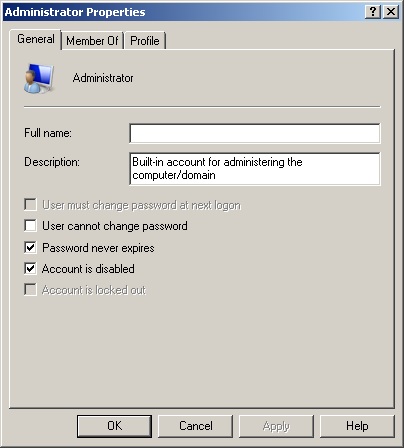

- #Os x shell script create local admin mac os x#
- #Os x shell script create local admin password#
- #Os x shell script create local admin windows#
–Set the computer name on the computer incase it was just renamed in the previous stepĭo shell script “scutil –set HostName” & space & computerFQHN withadministrator privilegesĭo shell script “dsconfigad -f -a ” & computerName & space & “-domain HQ. -u ” & user_name & ” -p ” & user_password & ” -ou \”CN=Computers,DC=HQ,DC=Hview,DC=com\”” with administrator privileges Set computerFQHN to computerName & “.hq.” –We also want to verify the FQHN is proper before we bind –Set the computer name and local hostname on the computer incase it was just renamed in the previous stepĭo shell script “scutil –set ComputerName” & space & computerName with administrator privilegesĭo shell script “scutil –set LocalHostName” & space & computerName with administrator privileges Open the terminal and type: nireport / /users name uid grep '5 0123456789 0123456789' This should report all users that are in the 500+ range for the user ID. First you need to know the current users, and their user IDs.
#Os x shell script create local admin mac os x#
Next we want to remove the users, note this will only remove the user access and not the files for that user. Here are the steps required to create a user in the terminal on a Mac OS X machine. Even if you know what you’re doing, this isn’t necessarily as simple as it seems.
#Os x shell script create local admin windows#
When done correctly you will see dsenableroot:: Successfully enabled root user. With the arrival of Windows 10’s Bash shell, you can now create and run Bash shell scripts on Windows 10.You can also incorporate Bash commands into a Windows batch file or PowerShell script.

#Os x shell script create local admin password#
Set computerName to text returned of ( display dialog “Set the computer name (ex: JDoe12345m)” default answer “”) This will ask for a user name and password of an admin user then ask to create a root password and have you confirm it. –Set the computer name is proper before we bind Setuser_password to text returned ofuser_password_dialog Set user_name_dialog to display dialog “Enter a domain admin account name: ” default answer “” buttons default button “Next” with hidden answer –get a domain admin user name and password which will be used to bind The Script (save this as an Application in OS X, then you can double click it to start): Bind to AD (normally done through Directory Utility)īelow is the script! OR, click here for pastebin!.Set system HostName (normally done via Terminal with scutil).Set NetBIOS name (normally done in Network prefs).Set Local Host Name (normally done in Sharing prefs).Set Computer Name (normally done in Sharing prefs).The Solution: An AppleScript application that accomplishes all of the following: The steps involved are considerably more tedious than joining AD on a Windows machine. The Challenge: As part of our deployment process for Macs in an AD environment, technicians are expected to rename the computer using a combination of Preferences panes as well as command line.


 0 kommentar(er)
0 kommentar(er)
